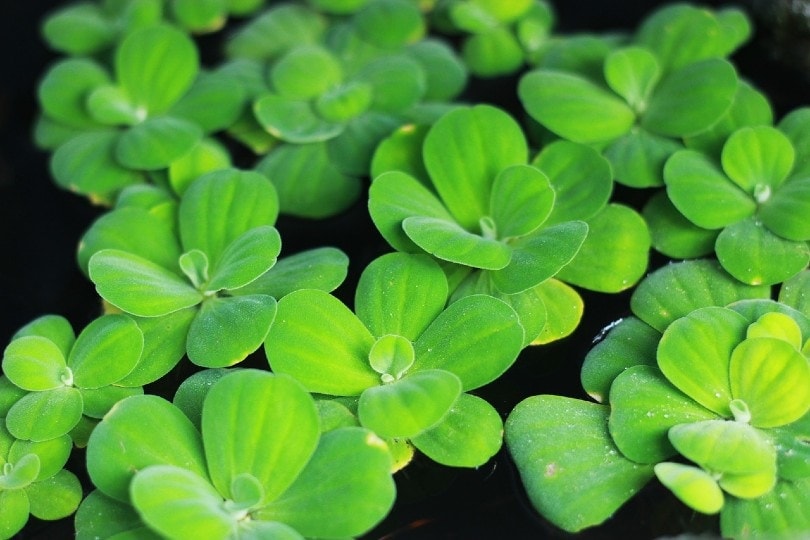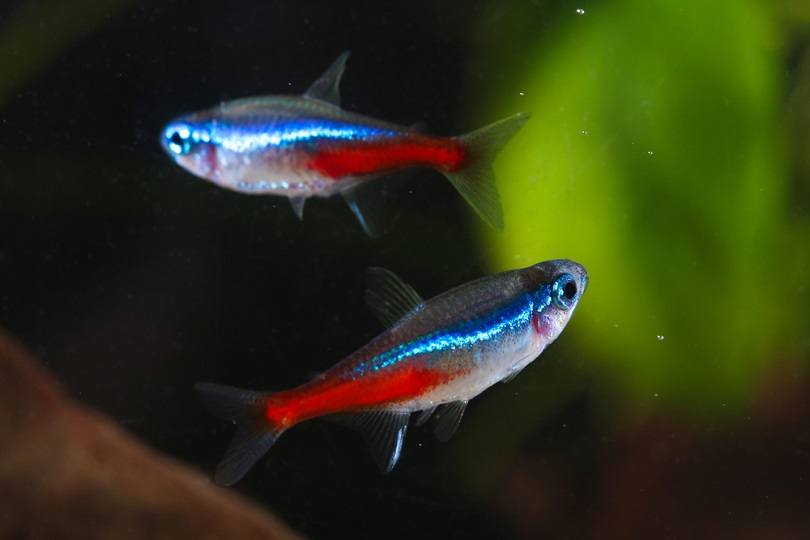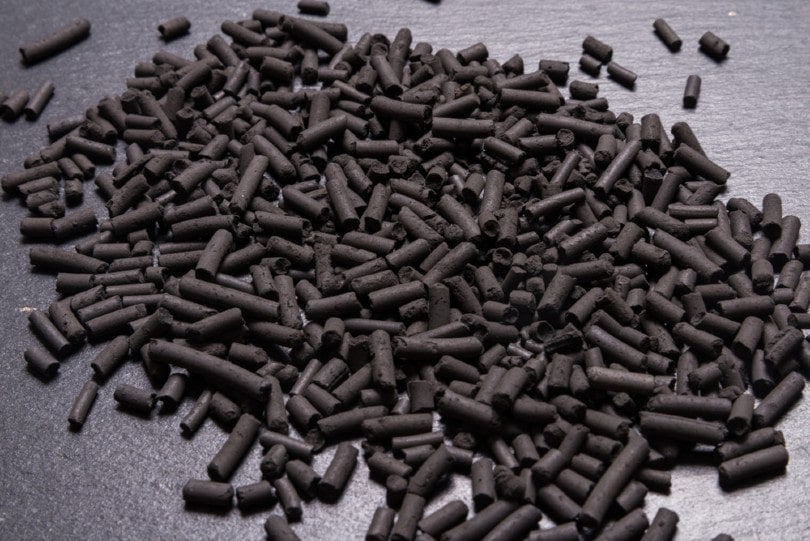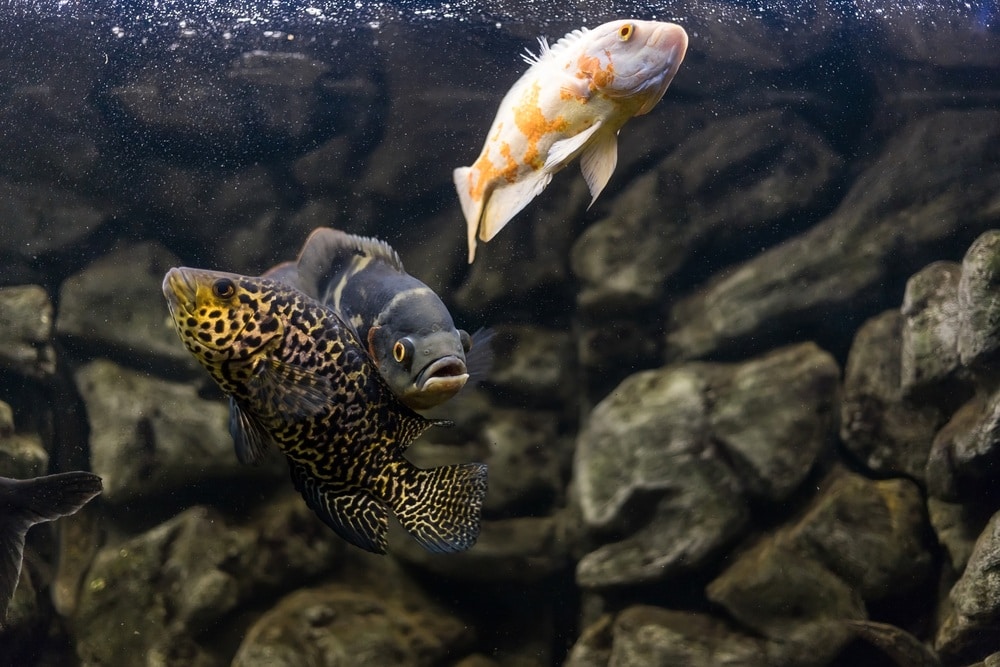Water Lettuce: Benefits & General Care Guide

Updated on

For anyone interested in foraying into the world of floating aquarium plants, Water Lettuce is a nice choice to start things off. Its easy level of care, low nutrient requirements, and hardiness make Water Lettuce a great option for indoor tanks.
Its distinctive appearance from all angles, as well as its secretive flowers, making it an exciting, visually pleasing option for the home tank.
This plant does require some maintenance and grooming, though, and its highly invasive nature means it should be handled with care and understanding of the devastating effects invasive species can have on local ecosystems. Here are the important things you need to know before bringing home Water Lettuce!
Useful Information About Water Lettuce
| Family Name: | Araceae |
| Common Name: | Water lettuce, water cabbage, shellflower, Nile cabbage, tropical duckweed |
| Origin: | Africa and/or South America |
| Color: | Light green, blue-green, grey-green |
| Size: | 2–10 inches in width
12+ inches in length |
| Growth Rate: | Moderate |
| Care Level: | Easy |
| Lighting: | Medium |
| Water Conditions: | 64–86˚F
pH 6.0–7.5 |
| Minimum Tank Size: | 10 gallons |
| Supplements: | None |
| Placement: | Floating |
| Propagation: | Runners |
| Compatibility: | Tropical freshwater tanks; tanks with high nitrates |

Water Lettuce Appearance

Water Lettuce is a rosette-shaped floating plant with hairy leaves. It produces tiny, white or yellowish flowers near the center of the rosette, but they may be obscured by the leaves. The flowers are similar in appearance to hairy Peace Lily blooms, complete with a yellow stamen in the center. Water Lettuce is available in various shades of green, including light greens and green colors with blue undertones.
Water Lettuce is easily recognizable from its long roots that drape elegantly into the water, creating root “forests”. These roots add a beautiful aesthetic touch to tanks and many fish enjoy swimming through the long roots. The roots can become thick and tangled and may require untangling or trimming. Without trimming, these roots may reach 12–24 inches in length.
Water Lettuce can reproduce sexually, but this is uncommon in indoor tanks. In the indoor environment, it usually reproduces via runners. The rosette appearance coupled with runners gives the plant an appearance like a hen-and-chick succulent floating on the surface of the water. A single water lettuce plant can create a grouping of plants up to 12 feet wide.
Where to Find It
Water Lettuce is considered an invasive species and thrives in high-humidity and tropical environments, so it can be found throughout South America and Africa as well as in places like South Carolina, North Carolina, Florida, and even Pennsylvania.
Water Lettuce is widely available from online shops. Local aquarium and pond shops may also carry it, depending on the location. Due to its invasive nature, it is illegal to sell or own Water Lettuce in Alabama, California, Florida, Louisiana, Mississippi, South Carolina, Texas, and Wisconsin.
General Care
Water Lettuce is an exceptionally easy plant to care for. It absorbs all required nutrients directly from the water and is a great option for reducing nitrates. This plant does not require nutrient supplementation but may grow best if this is provided. It does not require CO2 supplementation or well-oxygenated water.
The growth rate of Water Lettuce varies depending on the environment it is provided. It will grow most rapidly under high lighting, but moderate lighting is best to prevent damage to the plant. It requires high-humidity environments and may require a tank with a partial hood to help retain as much moisture in the air as possible.
Water Lettuce’s roots should be routinely pruned and can be cut as short as four inches while still keeping the plant alive and healthy. If allowed to grow unchecked, these roots may cause damage to tanks and equipment. They can overtake nutrients required by other plants and may block so much light that moderate to high-lighting plants cannot grow well. Ideally, this plant should be trimmed of runners regularly if the intent is not to allow the plant to overtake the entire surface of the water.
A single Water Lettuce plant can grow from 3–12 feet in width and can easily take up an entire 30-gallon tank or more.
Some fish enjoy the protection this plant’s long roots provide, but other fish will enjoy eating the roots and leaves of this plant. Goldfish and other grazing fish may decimate Water Lettuce plants. This may kill off the plants depending on the number and size of the fish, but more than likely the fish will help keep the growth of the plant in check.
Habitat, Tank Conditions & Setup
Tank/Aquarium Size
Water Lettuce should not be kept in tanks smaller than 10 gallons and ideally, it should be kept in tanks 30 gallons or larger due to how quickly and easily it can take over the surface of the water.
Water Temperature and pH
Water Lettuce is a tropical plant that appreciates high humidity. It will grow in water temperatures from 64-86˚F but grows best when the temperature is around 74–82˚F. It is relatively hardy to different pH levels but grows best in soft water with a pH between 6.0-7.5.
Substrate
This plant does not require a substrate of any kind. It absorbs nutrients via its long root system that dangles into the water. Its roots may grow into tank substrate, but it is unlikely.
Plants
Water Lettuce pairs well with other tropical plants with similar pH needs, especially those with low light requirements, like banana lilies. It may block a large amount of overhead light from reaching other plants.
Lighting
This plant grows best in moderate to high lighting. It grows most quickly under high lighting, but the leaves are prone to burning, especially if the plant is not used to the level of light it is receiving. It is recommended when bringing a Water Lettuce plant home to slowly increase the length and level of lighting it receives to prevent damage to the plant.
Filtration
This plant is happiest in slow-moving water. It appreciates waste products, like nitrates, and will filter these out of the water. It does not require tank filtration and has relatively low oxygen requirements.

Planting Tips
Water Lettuce may be one of the easiest aquarium plants to plant. It requires no substrate and floats on the surface of the water. It can be dropped directly onto the water’s surface and as long as it is not being battered by fast or strong water currents, it will be happy. It will follow water currents and may need to be corralled with airline tubing or something similar to keep it from being pushed under filter outputs.
Like all aquarium plants, it’s best to quarantine it separately for a week or longer before adding it to the main tank. This will reduce the risk of transmission of disease and pests like snails.
The 5 Benefits of Having Water Lettuce in Your Aquarium
1. Absorbing toxins
Water Lettuce is one of the best plants to absorb nitrates from tanks. It will also consume nitrites and phosphate in the water, so it is a great option in tanks with a heavy bioload.
2. Protection
Water Lettuce’s roots can reach adequate lengths to provide shelter to creatures in the tank. It is a great place for fry and shrimplets to stay safe from larger tankmates. It is also a good choice for shy fish that prefer lots of hiding places, like Tetras and Guppies.
3. Algae Control
Most algae bloom in moderate to high-lighting environments. The addition of Water Lettuce to tanks with overhead lighting can block light into the water, reducing the light required by algae to grow. Water Lettuce may also absorb nutrients from the water the algae need to thrive.
4. Propagation
Water Lettuce propagates easily from runners and may create runners even in poor conditions. This means that one Water Lettuce plant can be trimmed of its runners and used in other tanks in the home, or these runners can be used to create water surface coverage in large tanks.
5. Aesthetics
The rosette leaves of Water Lettuce are beautiful when viewed from above. When viewed from the side, the dangling roots create a unique aesthetic touch in tanks. It is truly a lovely plant when it is well-maintained.
Concerns About Water Lettuce
Water Lettuce is highly invasive due to its ease of reproduction and hardiness. It should not ever be released into native waterways and it is illegal in many areas to do so. If placed in outdoor ponds detached from natural waterways, it should only be placed in ponds that do not flood over during rain and carry no risk of contamination into the natural environment.
The long, flowing roots of Water Lettuce are incredibly beautiful but if allowed to grow unchecked, they can become tangled in tank décor, other plants, and filters. It also may create a thick, impenetrable forest of roots, which can lead to injury or death of aquarium animals.
Final Thoughts
When cared for properly, Water Lettuce can make a pretty and enjoyable addition to a tank. Tank residents will appreciate the benefits this plant offers, but it does require some routine maintenance. If not groomed properly, Water Lettuce can become a pest or even a danger in tanks.
If allowed to get into native waterways, Water Lettuce can damage the ecosystem and clog waterways. This is an easy-care plant, though, making it a good option for the beginning aquarist who is aware of the risks associated with this plant.
The addition of Water Lettuce in tanks will improve the water quality, consuming toxins and controlling algae, as well as releasing oxygen into the water that is necessary for the health and survival of animals in the tank.
Related Read:
- Is Water Quality the Secret to a Healthy Goldfish? Facts & Suggestions
- How To Make Aquarium Plants Grow Faster: 7 Useful Tips
Featured Image Credit: abcLONG, Pixabay










